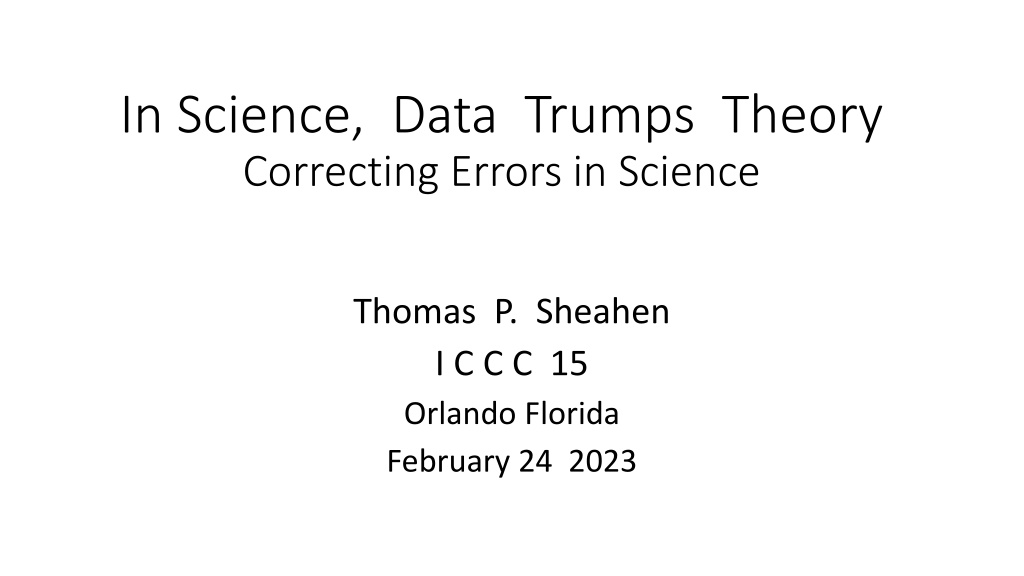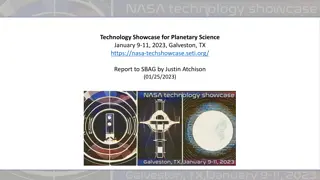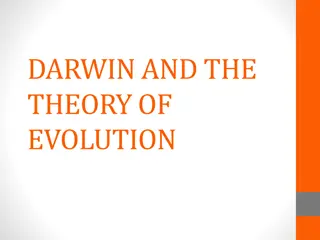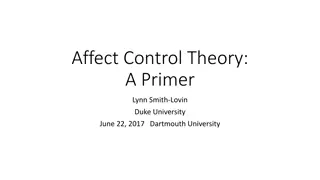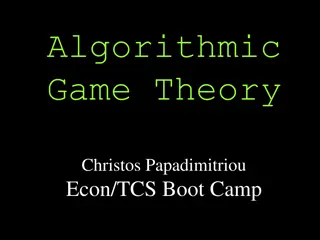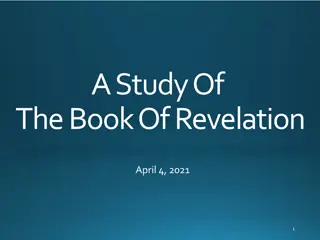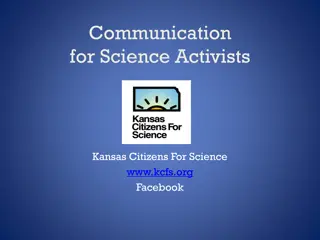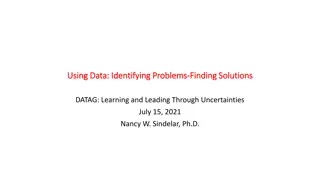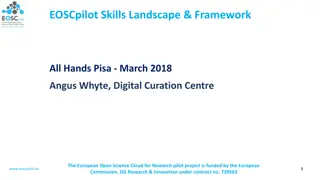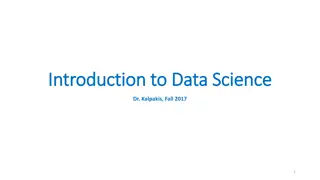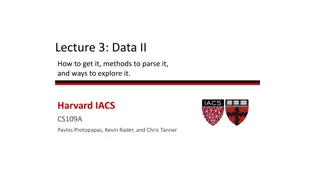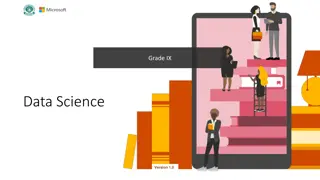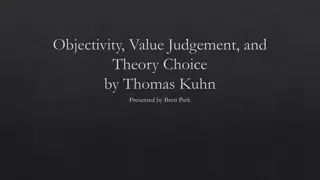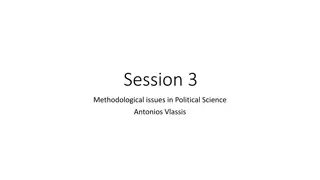The Triumph of Data over Theory in Science
In science, data holds more significance than theory, as demonstrated through historical examples like Galileo's refutation of Aristotle and the evolution of classical mechanics. The importance of adapting theories to new data is emphasized, along with the role of computer-aided advances in overcoming complex problems in various fields.
Download Presentation

Please find below an Image/Link to download the presentation.
The content on the website is provided AS IS for your information and personal use only. It may not be sold, licensed, or shared on other websites without obtaining consent from the author. Download presentation by click this link. If you encounter any issues during the download, it is possible that the publisher has removed the file from their server.
E N D
Presentation Transcript
In Science, Data Trumps Theory Correcting Errors in Science Thomas P. Sheahen I C C C 15 Orlando Florida February 24 2023
Basic Rule of Science Any Theory must conform to data or it will be dismissed Feynman s famous aphorism: It doesn t matter how smart you are or how beautiful your theory is; if it doesn t agree with experiment, it s WRONG ! Data, not theory is the cornerstone of the Scientific Method. This has been true for centuries.
History Lesson Aristotle (~300 BC) taught that a moving body tends to come to rest. This plausible philosophical notion was believed for > 1900 years Aristotle never recognized the presence of friction Galileo (~ 1600) made experimental measurements, took data, and showed that Aristotle was wrong. A perfect illustration that new data drives out old theory Law of Inertia: A body in motion stays in motion with a constant velocity, unless acted upon by a force. Newton s First Law (~ 1700) is identical, with minor word changes.
Recent Scientific Revolution Clqssical Mechanics was believed Perfect circa 1900 Explained observations perfectly .. as far as it went ~ 1880: Discrepancies noted regarding light Ether was impossible Space and time seem to contract For high-speed particles, improvements required Newtonian physics must be corrected New theory duplicated old theory at lower speeds Astronomical observations also didn t fit Red shift of starlight, bending of light rays Eventually, Gravity interpreted as curvature of space-time.
Important Lessons to keep in mind No theory is ever final Always subject to future corrections New data may show discrepancies in regions not anticipated by theory A new theory should encompass the old Same principle holds in other fields Biology: DNA explained genetics
Computer-aided Advances Intractable problems overcome by computer models Engineering: Airplanes, spacecraft Medical: CT scans, Magnetic Resonance Imaging Commerce: precise delivery schedules . . . many more Proper Use of models: testing a hypothesis Model must be tested and validated Computer prediction is compared with measured data Predicting the future is very risky No data for comparison If model doesn t apply, how do you know beforehand ?
Future Predictions Finite success breeds hubris Ancient definition of Idolatry: Confusing your model with the real thing Modelers fall in love with their models. But reality is usually more complex than the model The future eventually brings the test results If crash-test dummies get killed, nobody minds In the real world, a faulty prediction can be disastrous This is why any model must be validated.
The Limits to Growth computer model Industrial Dynamics computer model (1960s) had many successes Others adapted it to model civilization on earth (population, etc.) The Club of Rome published a report in 1972 Widely believed immediately United Nations used its predictions as a blueprint for action Mathematics of chaos was unknown in 1972 Coupled non-linear equations always break into chaos eventually The Butterfly Effect occurred in The Limits of Growth model Forecast outcomes of policies for 2100 were meaningless nonsense UN programs were already committed and underway
Modeling the Global Climate Existence of Greenhouse Effect known for a long time Arrhenius (1896) hypothesized importance of CO2 Considerable momentum accumulated behind that hypothesis CO2was believed to be the control knob of Temperature The Charney Report (1979) set the basic parameters to model Again, adaptation of existing weather forecasting models More powerful computers, large General Circulation Models Role of the water cycle was largely ignored too hard to model clouds, changing humidity
Contemporary Climate Models IPCCs Working Group I manages the modeling enterprise Four Representative Concentration Pathways were chosen Different numerical choices for forcing in Watts/m2 This form of standardization allows comparison of models The computer Model Intercomparison Project (CMIP) is: Instead of comparing with data, models are compared with each other Numerous modelers compare their outputs for each RCP In this way, a consensus emerges This method exerts pressure not to stray far from the consensus
Public Confusion and Fright Four scenarios were chosen: RCPs having different input parameters 1 to be unrealistically low 2 to be in plausible range 1 to be unrealistically high out-of-bounds cases serve as guard rails IPCC reports convey outputs of all 4 scenarios Without discriminating according to realism Media preferentially report only the too high case Makes headlines Gets attention Causes worry among the public
Christys Comparison Models are Not Valid
IPCC Curtails World-wide Alarm Media distortion caused fear to spread Politicians without technical acumen passed new laws against CO2 Students protested, businesses met demands, etc. The entire alarm was totally unnecessary and pointless IPCC realized the situation was getting out of hand Climate change had turned into a new secular religion The idolatry involved was believing that the models ARE the reality IPCC announced that RCP8.5 (the too high case) was not valid Not to be used for predictions New question: How long will it take for that news to penetrate the barriers of belief and commitment ?
Correcting Deficiencies Realize the severe limitations of modeling Input assumptions are never perfect Do not think one parameter can control the climate system Consider alternate causes Variations in sun s output, albedo variation, clouds, etc. Realize that any model might become chaotic Include dissenting inputs Validate all models Use data as the standard for comparison Much data is available from recent sources Satellites, Buoys at sea, balloon radiosondes
Conclusion: Restore Scientific Method Always remember the supremacy of data over theory
